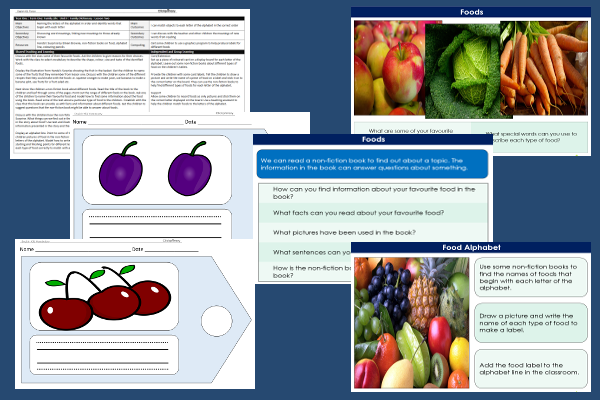Lesson Two – Food Alphabet

This English teaching pack for Key Stage One gets the children to identify and record the matching names of some of the special foods that begin with each of the different letters of the alphabet.
The class can identify and define the meaning of some of the special words that can be used to describe the appearance and taste of different pieces of fruit.
Download this teaching pack including a lesson plan, classroom activities and an interactive presentation to identify and record the matching names of some of the special foods that begin with each of the different letters of the alphabet
Activities in this teaching pack include a template to select and record a matching illustration and word label to name a special food that begins with one of the letters of the alphabet as preparation for producing dictionary entries about foods used by families to prepare different meals.
The interactive presentation gets the children to explore the names of some of the different foods that begin with each of the letters of the alphabet.
This lesson is part of an English scheme of work to get the children to read and write dictionary entries to define topic and vocabulary words about types of food that families could buy when going shopping, build different words using vowel digraphs and write and punctuate simple sentences. There are teaching activities for shared learning, differentiated worksheets to support independent learning and interactive presentations to introduce concepts and key skills.
-

Garden Numbers
Identify and model some of the different calculation techniques that can be used when adding pairs of single digit numbers
-

Summer Stories
Practise composing and presenting narrative stories with familiar settings to illustrate the events and experiences that could happen during the summer
-

Fraction Numbers
Investigate how to use concrete equipment, diagrams and calculations to identify and record the matching fractions of different numbers
-

Family Holiday Lists
Explore how to compile sentences punctuated using commas to list some of the special things that families can use, complete and experience on a holiday
